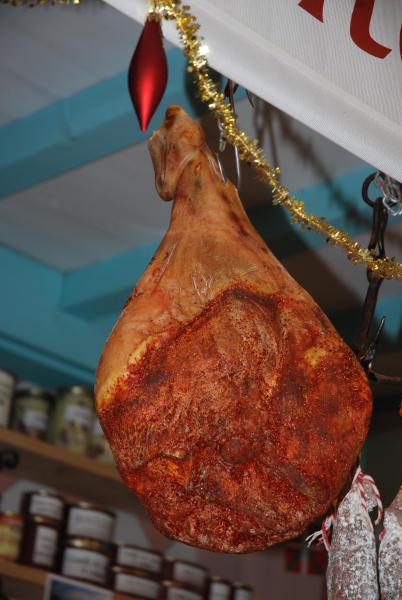- Read offline
- Access all content
- Use the in-app Map to find sites, and add custom locations (your hotel...)
- Build a list of your own favourites
- Search the contents with full-text search functionality
- ... and more!
jambon de Bayonne
cured ham from the Basque Country

Hams made from one of eight breeds of pigs raised in the Ardour valley and cured in the traditional way can call themselves jambon de Bayonne.
The legend goes that a wounded boar, shot by Prince Gaston Fébus, fell into a saline spring at Salies-de-Béarn. The animal’s body was found months later, perfectly preserved—and hence began the history of curing pork in the region.
In the Renaissance, jambon de Bayonne was a favourite of Marguerite de Navarre, Rabelais, and Henri IV, and it was served at the wedding of Louis XIV. It’s still made the traditional way, using Béarn’s exceptional mineral-rich salt, going through the various stages: salting and resting in a salt tub, drying in a cooling chamber, hanging from a beam to allow the cool mountain air to circulate around it, then sealed with a paste of pork fat and flour (pannage) and sometimes piment d'Espelette; followed by maturing and probe testing. If they make the grade, they are branded with the Basque cross, the Lauburu.
Similar to Italian proscuitto and Spanish jamón, jambon de Bayonne is sliced paper thin and served in a hundred different ways. The shank is an essential ingredient in garbure.
Image by Harrieta171

